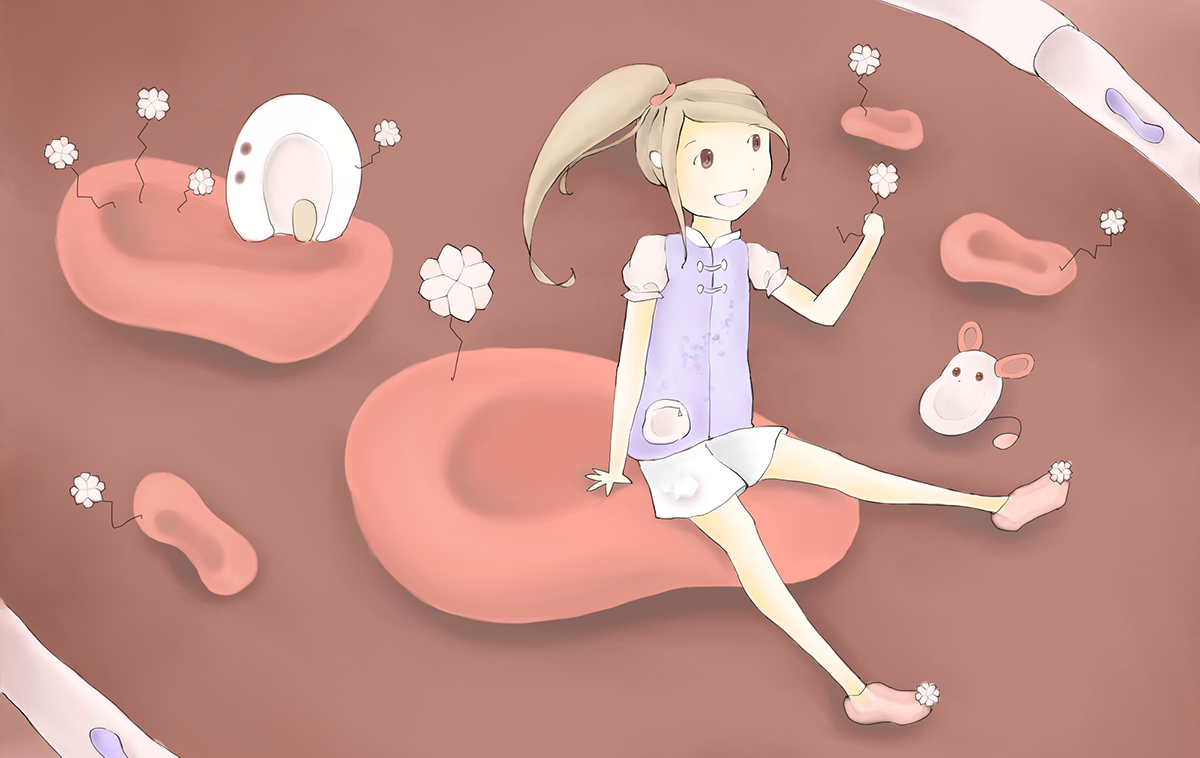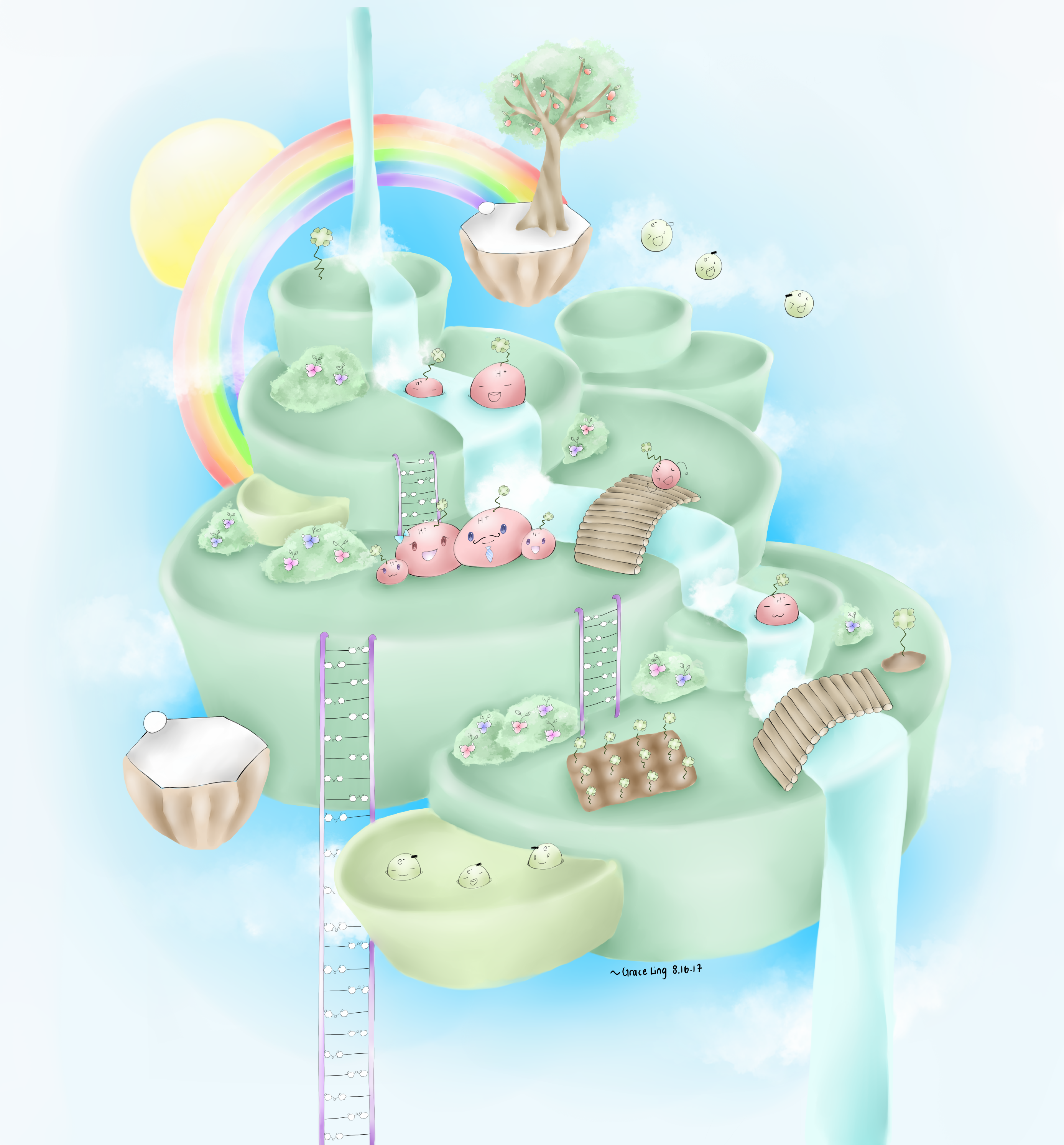
Virtual Biology
Grace Ling ’19 pitches an educational virtual reality game called “Cell-fie” in the Imagine That! competition.
Meet Grace Nucleus, the animated version of bioengineering major and computer engineering minor Grace Ling ’19. With the help of Nella Nucleus, Grace Nucleus has coded proteins and completed quests to evolve from Level 1 in the cytosol to reach Level 10, where she can defeat the mutation monster to earn the first specialization—the ability to repair mutations.
This is the world of “Cell-fie,” an anime-inspired virtual reality adventure full of rainbows, rolling hills, comforting pastels, role playing, and most importantly, hard science. Ling created the game to teach middle schoolers about two of her loves: art and biology.
In “Cell-fie” players create their own character (like Grace Nucleus) and take on the abilities of different organelles as they slay monsters to level up. Players choose their own path and attributes by following the guidance of characters like Ollie Vacuole, Benzene Bear, and Lila Lipid. Each character has their own special skills.

Thylakoid Island, located on Chloroplanet, is home to positive protons and excited electrons. The apples and berries grown on the island make it the planet’s largest source of chlorophyll.
Ling pitched the idea for “Cell-fie” at the first session of Imagine That! earlier this month. Imagine That! is a year-long competition hosted by the Imaginarium and the College of Arts and Sciences where teams of up to four students from different disciplines create a virtual reality experience to answer a question, solve a problem, or address a topic.
During the session, seven teams presented their ideas with games offering players a wide range of experiences from a school of witchcraft and wizardry to simulating the dangers of drunk driving. All the games are currently in the planning stage but each team hopes to have a playable demo by the end of the year.
Crowd-Sourced Theatre
“Each kind of medium has a different kind of story it can tell,” Angela Shao ’20 says. “We want to find what kind of story VR can tell.”
What Lee Harrold ’19 (theatre) David Lynch ’20 (business), and Shao (computer engineering) are proposing with their game “The Pines” is truly different—a virtual reality experience merged with theatre where crowdsourcing fuels the adventure.
“The Pines” is centered around a 65-year old lumberjack who is in the last day of his life. The lumberjack is controlled by an actor wearing a VR headset and wearing a motion capturing suit. The players are the audience, maneuvering the scene in invisible floating balls, watching the drama play out and calling attention to certain objects they’d like the actor to engage with.
For example, if the audience is interested in a hammer, the actor will improvise a storyline with the hammer.
“Based on what the actor chooses and what the audience is interested in, each time you get a unique, different story experience,” Shao says.
“The Pines” was inspired in part by Twitch Plays Pokémon, a social experiment where a video game channel offered users the opportunity to collectively play Nintendo’s Pokémon. Users typed in the directional command they wanted the Pokémon to perform (up or right, for example) and the character would perform the action.
“There is an interest in this mass participation medium where everyone is throwing what they want to do at the screen and chaos and democracy of voting makes its way to the top,” Lynch says.
Destigmatizing Mental Illness
For the game “Within,” players are asked to step inside the head of Alex, a teen with generalized anxiety disorder. Alex is in detention where he has been assigned four tasks. When the player goes to complete each task, it will trigger a daydream sequence that ties into thinking traps, which are thoughts that trap Alex in anxiety.
The team behind “Within”—Madeline Golliver ’20 (computer science/math), Vicki Lim ’20 (computer science), Cole Dennis ’19 (marketing/studio art), Connor Maguire ’20 (studio art/political science), and Jake Day ’19 (computer engineering)—hopes to create more understanding for mental illnesses like anxiety. The initial project will focus on generalized anxiety disorder but the team plans to explore other mental illnesses as well .
Hema Hemocyte travels down the capillary on a mission to deliver oxygen to the muscle cells in need. Illustration by Grace Ling ’19